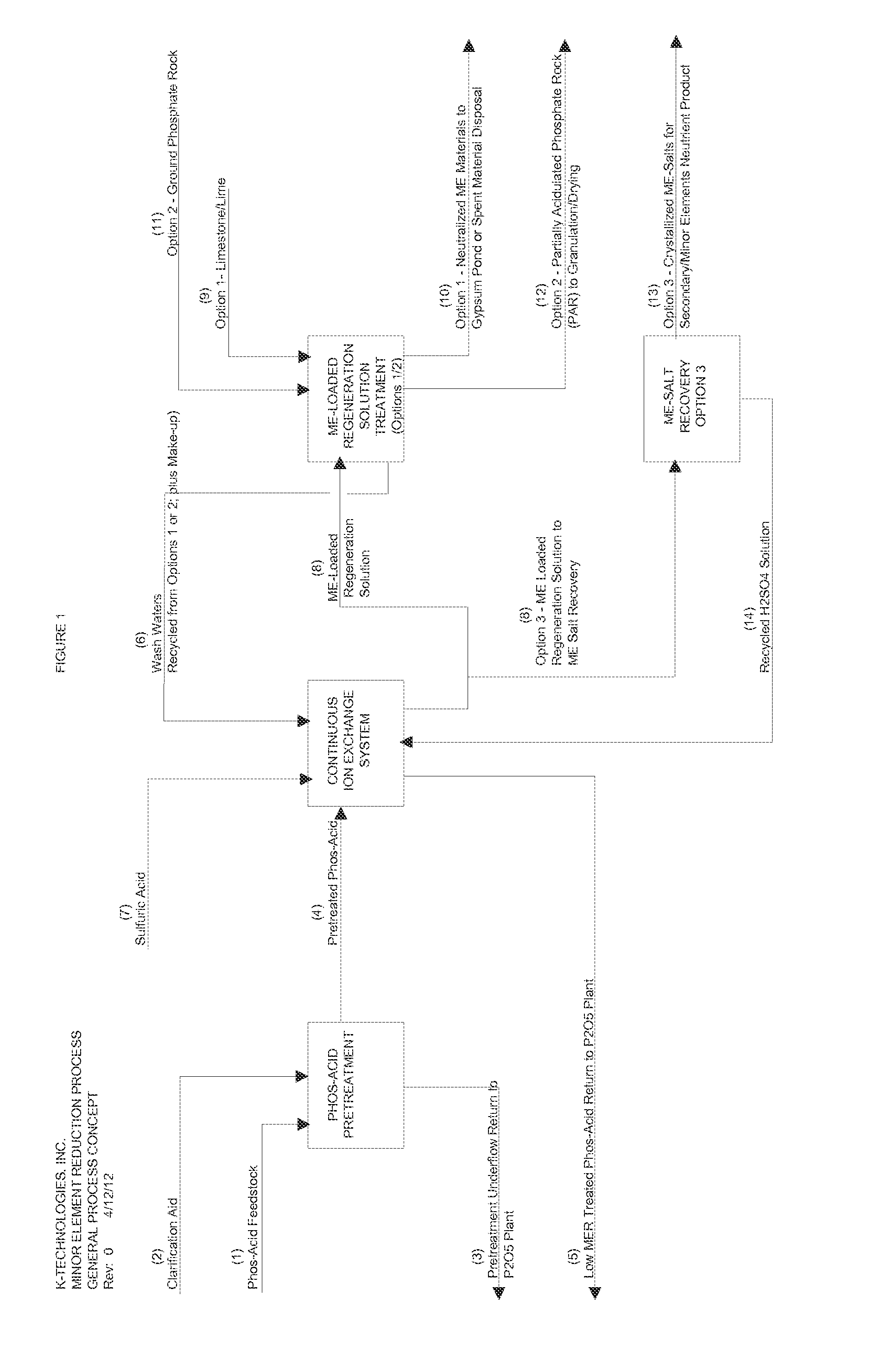Processes for the removal and recovery of minor elements in wet-process phosphoric acid
- Summary
- Abstract
- Description
- Claims
- Application Information
AI Technical Summary
Benefits of technology
Problems solved by technology
Method used
Image
Examples
Embodiment Construction
[0043]In alternative embodiments, the invention provides processes and methods for the recovery or the removal of iron, aluminum and magnesium (as cationic species) the so-called “Minor Elements”, from a wet-process phosphoric acid stream using a continuous ion exchange approach. In alternative embodiments, processes and methods of the invention allow for phosphate rock mining operations to increase the recovery of potentially useable ore or rock by allowing for the processing of lower grade ore or rock sources, thus enabling an effective “expansion” of the phosphate rock source without the need for development of additional mining area. Thus, the producer can stay on a developed site and utilize lower grade materials for a longer period of time.
[0044]In alternative embodiments, as illustrated in FIG. 1, the exemplary Minor Element Reduction (MER) reduction process of the invention comprises pretreating a phos-acid (e.g., by filtering), or receiving a pretreated phos-acid, e.g., a f...
PUM
| Property | Measurement | Unit |
|---|---|---|
| Fraction | aaaaa | aaaaa |
| Fraction | aaaaa | aaaaa |
| Fraction | aaaaa | aaaaa |
Abstract
Description
Claims
Application Information
 Login to View More
Login to View More - R&D
- Intellectual Property
- Life Sciences
- Materials
- Tech Scout
- Unparalleled Data Quality
- Higher Quality Content
- 60% Fewer Hallucinations
Browse by: Latest US Patents, China's latest patents, Technical Efficacy Thesaurus, Application Domain, Technology Topic, Popular Technical Reports.
© 2025 PatSnap. All rights reserved.Legal|Privacy policy|Modern Slavery Act Transparency Statement|Sitemap|About US| Contact US: help@patsnap.com


